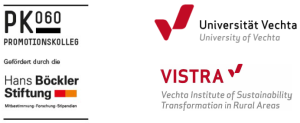Ecosystem services (ES) by definition are the benefits received by people that are provided by ecosystems. The process of identifying, quantifying, and accounting for the economic value of ES has been recognized as a valuable tool for the efficient allocation of environmental resources and management investments on public lands. To permit the practical application of ecosystem services assessment and valuation information in management planning, methods and tools need to be developed that can utilize this information to identify effective management activities and establish optimal or priority management sites. Maps of service provisioning and flow can provide information critical to the identification of suitable management activities on a landscape. Valuation of services and flows can reveal potentially hidden social costs and benefits and internalize them in the process of prioritizing management activities (Troy and Wilson, 2006). The ability to optimize service flows and values associated with trade-offs in the decision making calculus would permit the development of priority management plans that integrate both activities and locations (for example, Polasky and others., 2008; Ligmann-Zielinska and others, 2008).
Few ES research efforts to date have effectively identified, mapped, and modeled both the provision and use of (or supply and demand for) specific ES. Moreover, the spatial and temporal flow or movement of ES across the landscape from ecosystems to people is poorly understood and has rarely been modeled. Accounting for the spatially distributed provisioning, flow, and consumption of ES will provide critical information for use in land management and planning. Spatial knowledge of ES flows in particular is important for the eventual establishment of markets, and by explicitly identifying providers and beneficiaries, can provide information critical for the establishment of payment schemes. This knowledge would further improve the ability of planners and land managers to identify locations and opportunities for conservation and restoration that preserve flows of key ES to human beneficiary groups, and to determine where development or extractive resource uses are more and less compatible with preservation of ES flows to beneficiaries.
This Mendenhall Opportunity focuses on examining spatial patterns of ES provisioning and consumption, and the identification of land management strategies that can optimize service provisioning and the sustainable economic value derived from public lands. Postdoctoral research will be done in close cooperation with existing collaborative ES research partnerships within the U.S. Geological Survey (USGS), other Federal agencies, county government, and local universities. A number of potential project sites exist, and applicants need to consult with the Research Advisors to identify the one best suited to their interests. The Mendenhall Fellow will build on and improve existing methods, or develop new methods as appropriate for mapping and valuing ES flows, and facilitate trade-off analyses by utilizing stakeholder constraints to identify optimal land management strategies.
Mendenhall project proposals will require a flexible approach that can accommodate multiple methods of ES assessment, as well as both monetary and non-monetary valuation. We anticipate that the applicant will be able to utilize ES provisioning information obtained by a variety of methods and from a number of different project participants who have or are in the process of modeling and mapping specific services. This provisioning information needs to be connected to use by beneficiary groups, and along carrier-specific flow paths from ecosystems to people. For some services valuation may be required; for others it will be established. The applicant will identify the necessary spatial data to populate any selected models, and will work with disciplinary experts to improve both the theoretical soundness of the models and to calibrate them where possible. Methods comparison will be encouraged where possible.
Project proposals must be able to incorporate both baseline and scenario assessments. Scenarios, based on pre-selected environmental stressors for example,vclimate change), will be developed and assessed at potential project sites to account for a range of anticipated future conditions. Proposed methods for the identification of optimal land management strategies will thus require consideration of distinct potential future conditions in addition to the present condition of the landscape. At present, scenarios represent the best available means for anticipating ecosystem change. Management strategies must therefore be designed with the aim of maximizing the achievement of management objectives under a range of potential future conditions.
The results of this research will increase USGS’s capability for mapping, valuing, and optimizing ecosystem service flows to assist with decision making on public lands. We expect that the research will produce new methods and tools that can be incorporated into public domain software to facilitate technology transfer to a wide range of land management problems that can benefit from ES assessment and valuation information.
References
Ligmann-Zielinska, A., Church, R.L., and Jankowski, P., 2008, Spatial optimization as a generative technique for sustainable multi-objective land-use allocation: International Journal of Geographical Information Science, v. 22, no. 6, p. 601–622.
Polasky, S., Nelson, E., Camm, J., Csuti, B., Fackler, P., Lonsdorf, E., Montgomery, C., White, D., Arthur, J., Garber-Yonts, B., Haight, R., Kagan, J., Starfield, A., and Tobalske, C., 2008, Where to put things? Spatial land management to sustain biodiversity and economic returns: Biological Conservation, v. 141, p. 1505–1524.
Troy, A., and Wilson, M.A., 2006, Mapping ecosystem services: Practical challenges and opportunities in linking GIS and value transfer: Ecological Economics, v. 60, p. 435?449.
Proposed Duty Station: Denver, CO; Fort Collins, CO
Areas of Ph.D.: Geography, ecology, economics, sociology, mathematics, and/or computer science (candidates holding a Ph.D. in other disciplines but with knowledge and skills relevant to the Research Opportunity may be considered).
Qualifications: Applicants must meet one of the following qualifications: Research Geographer, Research Ecologist, Research Economist
(This type of research is performed by those who have backgrounds for the occupations stated above. However, other titles may be applicable depending on the applicant’s background, education, and research proposal. The final classification of the position will be made by the Human Resources specialist.)
Research Advisor(s): dsemmens@usgs.gov; Jay Diffendorfer, (303) 202-4070, jediffendorfer@usgs.gov; Todd Hawbaker, (303) 202-4303, tjhawbaker@usgs.gov; Lynne Koontz, (970) 226-9384, koontzl@usgs.gov
Human Resources Office contact: Janet Presley, (303) 236-9573, jpresley@usgs.gov



